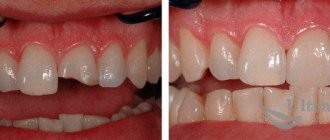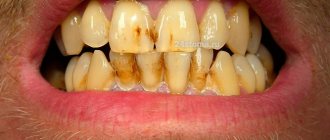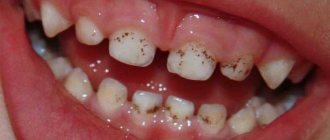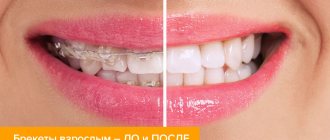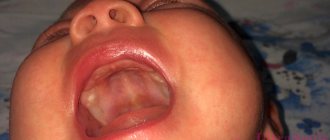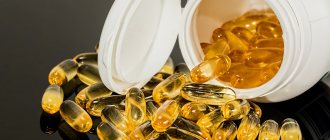Cracks in the corners of the mouth are the main symptom of angulitis. This is a disease of the mucous membrane and skin that develops under the influence of streptococci or yeast-like fungi. Diabetes mellitus, problems with bite, lack of vitamin B2 and even long-term antibiotic therapy also contribute to the occurrence of cracks. Why is the skin in the corners of the mouth prone to cracking, how to neutralize and prevent the development of the process in the future?
General characteristics of the condition
Painful cracks around the mouth are colloquially called jams. Zaeda is one of the forms of stomatitis (damage to the oral mucosa) caused by streptococci or yeast-like fungi of the genus Candida. In some cases, doctors diagnose mixed infection (angular stomatitis).
The following angulitis are distinguished: allergic (when using lipstick or other cosmetics), microbial (streptococcal, candidiasis, etc.) and post-traumatic (postoperative, post-manipulation, etc.). Microbial angulitis most often occurs in patients with diabetes mellitus (streptococcal) or in HIV-infected people (candidomycosis). Microbial angulitis in children can occur due to intestinal dysbiosis, vitamin deficiency, decreased immunity and other diseases. Post-traumatic (postoperative) angulitis is cracks in the skin and mucous membranes (linear tears in the skin or mucous membrane) in the area of the corner of the mouth, resulting from excessive (excessive) stretching after intraoral surgical dental operations (removal of dystopic or impacted wisdom teeth) or manipulations associated with treatment of wisdom teeth. Almost after every removal of an impacted or dystopic wisdom tooth, maxillary sinusotomy or other surgical interventions that require wide opening of the mouth, damage (by stretching) to the surface layers of the skin and mucous membrane in the area of the corner of the mouth occurs, i.e. post-traumatic (postoperative) angulitis.
Morphological features
Streptococcal angulitis most often develops in patients of the younger age category. First, a small bubble appears in the corners of the mouth, covered with a thin film. Later, erosion forms at the site of the bubble, covered with a crust of congealed blood and purulent masses. When the blister is opened, moist red skin with traces of minor bleeding is exposed. You can often find a crack in the center of the bubble. Approximately 1-2 hours after opening, the skin again becomes covered with a dense crust.
Content:
- General characteristics of the condition
- Possible reasons for development
- Features of therapy and prevention
Streptococcal infection of the mucous membrane is accompanied by discomfort and pain when opening the mouth.
Seizures of fungal origin are slightly different from streptococcal ones. Initially, a varnish-red erosion forms on the mucosa, surrounded by an additional layer of epithelium. Sometimes erosion is covered with a grayish coating. A specific crust does not form in case of candidiasis angulitis. Most often, the crack is masked by an overhanging skin fold and has a chronic, relapsing course.
Symptoms of seizures in the corners of the mouth
Clinical manifestations and symptoms of the lesion depend on many factors and stages. It usually begins with redness of the skin in the corners of the mouth, peeling, and the appearance of bursting blisters. Areas of erosion appear on the mucous membrane and skin of the corner, which become covered with a crust, when ruptured, cracks of varying depths can form.
In areas of inflammation, constant itching is felt, pain appears when opening the mouth, pain when eating spicy food. It is especially typical that a sharp pain appears in the morning, after sleep, when you first open your mouth.
But in some rare cases, obvious pain symptoms are mild, especially in elderly people, or in people suffering from diabetes mellitus (when seizures appear as a consequence of candidal stomatitis).
Possible reasons for development
The appearance of a jam indicates not only infection or internal pathological processes, but also the bad habits of the person himself. Regularly licking your lips is a ritual that some people find extremely difficult to break. It is important to understand that regular exposure to saliva, which contains billions of bacteria, has a detrimental effect on the mucous membranes. If a crack has already formed, licking the lips interferes with regeneration and further fuels the infection.
Neglecting the rules of personal hygiene is also fraught with the development of cracks in the corners of the mouth. Possible causes include: microtraumas, lack of cleansing, dirt on the skin.
Eating in childhood most often indicates iron deficiency anemia. Therefore, all pediatricians advise immediately taking a blood test for iron, and not sinning on problems with the baby’s hygiene. The main thing is not to try to correct anemia on your own. Introducing meat and pomegranates in large quantities into the diet can only maintain the existing iron level, but not increase it. Noticed symptoms of anemia? Go to the doctor and undergo a comprehensive therapeutic course.
Cracks in the corners of the mouth can also be a symptom of:
- vitamin B2 deficiency;
- malocclusion;
- missing teeth or incorrectly selected dentures;
- allergic lesions of the oral cavity;
- caries;
- metabolic disorders;
- long-term treatment with strong medications.
What you need to know about chronic recurrent binge eating?
In some cases, therapy gives a short-term effect or does not affect the condition of cracks in the corners of the mouth at all. For frequently recurring seizures, the doctor must conduct a comprehensive diagnosis of the body, identify and eliminate the root cause. What diseases can chronic angulitis indicate?
- HIV. A weakened body becomes easy prey for pathogenic microbes. Most often, cracks cannot be treated, and the surrounding skin becomes covered with a white coating, becomes dry and inflamed.
- Tuberculosis, chronic infectious pathologies. Microtraumas occur due to fungus or mixed flora. Often, recurrent seizures are accompanied by increased night sweats and sudden changes in body temperature.
- Intestinal diseases. Failure of the functionality of the gastrointestinal tract is always associated with disruption of metabolic processes. Intestinal diseases impair the absorption of nutrients, including iron and B vitamins. The lack of these nutrients provokes a decrease in the protective function of the mucous membrane and the development of cracks.
- Diabetes. In diabetes mellitus, an imbalance of mucosal microorganisms occurs. Moreover, by-products of impaired glucose metabolism accumulate in tissues. The result is microtrauma of tissue with a characteristic white coating, which is hidden behind skin folds.
- Oncological diseases. Cancer suppresses the body's protective functions and consumes the lion's share of nutrients, which can lead to a lack of micro- and macroelements and anemia. Recurrent seizures may well be a symptom of a tumor in the oral cavity or gastrointestinal tract.
10 reasons for cracks in the corners of the mouth
The condition of the lips (their soreness, appearance) is one of the indicators of human health. Peeling, dryness, pallor, as well as cracks in the corners of the mouth can be not only a cosmetic defect resulting from physical damage and weather conditions, but also a companion to certain diseases and disorders in the body, and then treatment is required. Let's look at 10 reasons for the appearance of angular cracks (jams) in the corners of the mouth and ways to eliminate them.
Traumatization
Traumatization of the area around the lips leads to the appearance of cracks, causing an annoying feeling of dryness, tightness of the skin, and pain. The most common cause of damage is regular visits to the dentist, during which a person has to stretch his lips and open his mouth too wide. This is especially true when a doctor uses an instrument, such as an examination mirror, carelessly. Sometimes, after prolonged treatment by the dentist, the crack simply fails to heal.
In addition, similar problems can arise when using removable dentures: when they are inserted and removed, it is the area of the corners of the lips, which is particularly sensitive, that is most injured.
For quick healing in such cases, it is recommended to apply a complex of vitamins A and E to the damaged areas and make lotions from medicinal herbs (sage, calendula, chamomile).
Poor oral hygiene
Penetration of infections into microcracks in the skin due to insufficient hygiene of the body and oral cavity also often causes inflamed wounds in the corners of the mouth - especially in children who touch their faces with dirty hands. Frequent occurrence of angular cracks due to bacterial load also affects people who neglect regular brushing of their teeth and gums.
Adverse weather conditions
Dry, windy weather, frost, and arid heat are common causes of flaking and tightness of the skin in the mouth area, which, if it is not sufficiently moisturized, can lead to the formation of an inflamed crack. It is easy to prevent its occurrence by caring for the sensitive area: daily applying nourishing cream or Vaseline before going outside.
Avitaminosis
A lack of vitamin B12 in the body can cause angular fissures, and with them swelling and redness of the lips, inflammation of the tongue, conjunctivitis, and burning in the eyes. This condition is observed in spring vitamin deficiency, insufficient intake of the vitamin from food and in diseases that lead to disruption of its absorption by the body. In the first two cases, it is recommended to compensate for the lack of vitamin by including in the diet a sufficient amount of meat and dairy dishes, eggs, cabbage, spinach, legumes, and whole grain cereals. In the latter case, you need to see a doctor and undergo a course of treatment.
Fungal skin lesions
Cracks in the corners of the mouth can be fungal in nature - for example, caused by the Candida fungus. The disease is often provoked by reduced immunity due to past illnesses or the presence of general diseases (gastrointestinal pathologies, diabetes mellitus, blood diseases, etc.), taking antibiotics, cytostatics, hormonal drugs. Candidomycotic or yeast infection is usually covered with a grayish-white coating, which is easily removed with a napkin; there is no crust. Treatment of the fissure is carried out with the help of nystatin, levorin or other special ointments, and in severe cases it is accompanied by taking antimycotic drugs orally. A doctor should prescribe medications to treat fungal infections.
Syphilis
One of the elements of primary syphilis - chancre - is often disguised as an ordinary syphilis. In this case, the crack is usually painless, covered with a silvery-white coating and has a compaction at the base, which, when the lips are stretched, takes on an oval shape. When a secondary infection (bacterial or streptococcal) is added, the syphilitic lesion deepens and turns into a discomforting ulcer. Treatment of such a disorder is carried out under the supervision of a venereologist and consists primarily of destroying the causative agent of syphilis - Treponema pallidum.
Iron-deficiency anemia
Low hemoglobin is one of the common causes of cracks in the corners of the mouth. In the presence of the disease, the ulcer is often accompanied by general weakness, pallor, rapid heartbeat, shortness of breath and other symptoms. Treatment of angular fissure in anemia should be accompanied by the elimination of iron deficiency in the body, depending on its cause: eating foods rich in iron and vitamin B12 (whole grain bread, fruits, red meat, nuts, greens), taking special medications, antiparasitic therapy (in the presence of worms ) and other methods.
Diseases of internal organs
Sometimes chronic and recurrent binge eating can accompany some common diseases - for example, endocrine diseases, diseases of the cardiovascular system, gastrointestinal tract, and even disorders in the psycho-emotional sphere. In this case, the ulcer is usually soft to the touch, covered with a crust and is moderately painful. Elimination of the crack is possible with full treatment of the disorders that caused it. It is worth noting that it is not recommended to treat a stubborn crack in the corner of the mouth on your own - according to doctors’ observations, in 3% of cases it can become malignant.
Atopic cheilitis
Atopic cheilitis is an inflammatory disease of the lips, which often leads to the formation of a lip. The disease is neurodermatological in nature and can be provoked by allergies, hormonal disorders, but most often by malfunctions of the nervous system, which is why it is most common in children and adolescents aged 10-17 years. A crack in the disease occurs against the background of peeling, dry skin of the lips and face; Inflammation of the lip border and covering of their surface with small scales are also observed. For atopic cheilitis, vitamin therapy, treatment with antihistamines, and corticosteroid ointments are carried out in strict accordance with the doctor's prescription.
Bad habits Bad habits are common sources of health problems, and the symptom in question is no exception. Smoking, drinking alcohol, licking lips, biting nails, holding a foreign object (pencil, pen) in the mouth contribute to a decrease in both general and local immunity. When the harmful effects cease, cracks that arose for the above reasons quickly heal and stop appearing.
Features of therapy and prevention
Best materials of the month
- Coronaviruses: SARS-CoV-2 (COVID-19)
- Antibiotics for the prevention and treatment of COVID-19: how effective are they?
- The most common "office" diseases
- Does vodka kill coronavirus?
- How to stay alive on our roads?
Therapy is based on eliminating the root cause of the seizure, but there are also general recommendations for caring for the affected skin. If the cracks are streptococcal in nature, ointments with antibiotics are additionally administered, and if they are fungal, ointments with an antifungal effect are administered. The skin around the crack must be regularly treated with disinfectant solutions to avoid re-development of the source of infection. After eliminating the root cause, therapy continues for another 7-10 days until the skin is completely restored.
Depending on the root cause of angulitis, the course of treatment may include the use of antibiotics, B vitamins or paraffin-based ointments. In most cases, the prognosis is favorable. The main thing is not to self-medicate, consult a doctor in a timely manner and follow all necessary recommendations.
Complications of lip jams
At the first, initial stage, the superficial layers of the mucous skin are affected and timely treatment of the jam leads to a quick recovery. But if left untreated, the lesion spreads to the deeper layers of the skin with the formation of a deep crack in the corners of the lips and the participation of lymphatic capillaries. The lesion can spread to neighboring areas of the skin, new cracks form, they combine into a large wound, which requires separate and special treatment.
How to treat a cracked lip in the middle: therapeutic agents
- If the lip is cracked in the middle as a result of a fungal disease, you should use appropriate antibacterial medications.
- This could be Tetracycline or methyluracil group, Levomekol, Vishnevsky balm.
- If there is no positive effect for a long time, you can try Purelan-100 , based on lanolin.
- Before using the drug, you should disinfect the damaged area and do not remove drying crusts on the lip.
- You can also use cream or Vaseline to soften and moisturize , lubricating the skin around the crack without touching it directly.
We soften
- This procedure must be repeated several times a day. Alternatively, you can replace Vaseline with pork fat.
Cracked lip in the middle: does it need to be treated?
- Such microtrauma does not seem worth close attention to us, so many people ask the question: is the lip cracked in the middle - does it need to be treated?
- The answer to this question can be either positive or negative, depending on many circumstances.
- So, if a crack in your lip appears once and quickly heals on its own, and you do not feel any particular discomfort when eating, talking, or facial movements, you should wait a day or two without resorting to medications.
- If cracks begin to appear frequently , even if they heal quickly, it is best to consult a specialist, because it is possible that the problem indicates a malfunction in the body.
Should I treat the crack?
- By eliminating the initial cause determined by the doctor, you will also get rid of the appearance of cracks on your lips without additional effort.
- Well, and, of course, deep wounds that do not heal for a long time must be treated, again, having previously examined your body to see if everything is okay with it and whether there are any malfunctions in the functioning of any organ.
Cracked lip in the middle: a sign
Signs about what a crack on the lip means developed in ancient times and have survived to this day.
- Is your lip cracked in the middle? A sign of recent passionate kisses . This is explained by the fact that girls have long applied honey or wax coating to their lips to protect them from wind or sunlight. Before the date, this layer was washed off so that the lips were soft and natural. Deprived of their usual protection, and even under the influence of a hot kiss, their lips easily cracked, thereby betraying the secrets of the girl’s heart.
- Evil eye . Everyone has long known that a person who has been “jinxed” becomes vulnerable to negative influences. And all these factors negatively affect health, including skin condition. Therefore, it has become a custom to interpret the appearance of a crack on the lip as one of the signs that a person has been exposed to the evil eye.
- There is another interesting sign that warns you about what needs to be done to prevent your lips from cracking. You just need to kiss the ground at the first spring thunder . The sign says that this action will protect your lips from cracking (and, by the way, from toothache) for a whole year.
- There is also an interpretation of a dream in which you saw a crack in your lip. Such a dream speaks of impending troubles: failures, separations, unnecessary spending.

